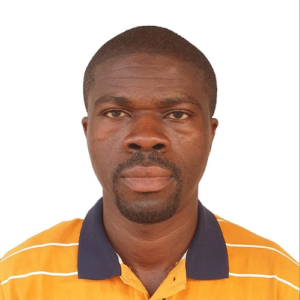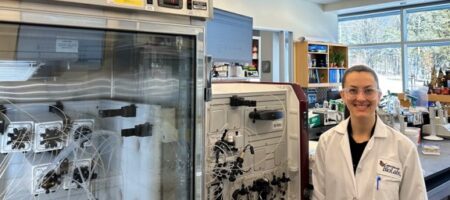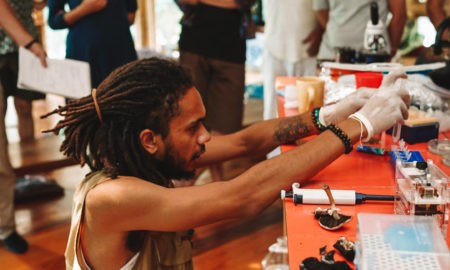Meet The eDNA Collaborative 2024 Minigrant Recipients (Part 2)
The eDNA Collaborative has identified twenty-two inspiring researchers whose projects exemplify the power of eDNA science. These diverse researchers hail from all corners of the globe and their research addresses environmental management and conservation challenges using molecular methods. The Microgrants Program supports eDNA researchers with materials, equipment, and educational learning, providing funding to traditionally under-funded and under-resourced areas.
Below we introduce you to six more of the 2024 Microgrant recipients. Read their research abstracts below to find out about the diverse set of scientific problems this amazing group tackles. We take enormous pride in playing a role in the provision and global distribution of portable molecular biology equipment to support these awards, including PCR and gel electrophoresis. We can’t wait to see these miniPCR tools being put to great use in the hands of these awardees.
Taner Yildiz
 Affiliation: Istanbul University, Faculty of Aquatic Sciences; Istanbul, TÜRKIYE.
Affiliation: Istanbul University, Faculty of Aquatic Sciences; Istanbul, TÜRKIYE.
Research question
How effectively can environmental DNA (eDNA) methods, applied through on-site analysis using drainage channel water samples from the Gürpınar Fish Market, offer a comprehensive species footprint of traded fish, aiding in surveillance and conservation efforts?
How will you use the miniPCR equipment to answer your research question?
Embarking on a scientific exploration within the confines of Gürpınar Fish market, Turkey’s biggest fish market, our research strives to elucidate the intricacies through a multidimensional lens. Beyond the routine confines of traditional fisheries management, our work tries to integrate monthly visual surveys with advanced environmental DNA (eDNA) analyses, forging a comprehensive understanding of the fishery’s dynamics. Our dual methodology includes meticulous visual surveys conducted twice a month, capturing real-time snapshots of the fishery’s species composition. The data amassed from these surveys contribute significantly to our ongoing efforts in delineating species composition and temporal variations within these pivotal fisheries.
Simultaneously, we employ cutting-edge eDNA analyses, focusing on water samples extracted from the drainage channels within the auction area. This innovative molecular approach unveils a collective “species footprint,” offering insights into the diverse biological material transported through these conduits. By applying eDNA management to water samples with elevated suspended solid density, such as those from the fish market’s drainage channels, we aim to ascertain the feasibility of this approach in elucidating species presence. Observing the fishery in action is paramount for effective management. In conjunction with our visual surveys, we meticulously document species lists, providing a real-time perspective on the traded biodiversity. This holistic approach not only contributes to our understanding of the market’s dynamics but also serves as a foundation for informed fisheries management strategies.
Juliet Edekor
 Affiliation: University of Ghana; Accra, GHANA.
Affiliation: University of Ghana; Accra, GHANA.
Research question
To use eDNA to determine the presence of invasive species and endangered species along the coast of Ghana.
How will you use the miniPCR equipment to answer your research question?
I will use the miniPCR equipment to amplify the DNA that would be extracted from the water samples and sent for sequencing. Samples for my research will be collected in replicates. Currently, there is only one PCR machine available for all scientists in my unit. I will be working with a lot of samples, so having unrestricted access to this equipment will enable me to advance my eDNA training and research.
Koudjode Simon Abahi
 Affiliation: Université de Parakou / Laboratoire d’Ecologie, Santé et Production Animales (LESPA); Parakou, BENIN.
Affiliation: Université de Parakou / Laboratoire d’Ecologie, Santé et Production Animales (LESPA); Parakou, BENIN.
Research question
Are the results of eDNA metabarcoding method comparable, complementary or different to those of the traditional morphological method in the context of tropical Africa?
How will you use the miniPCR equipment to answer your research question?
The metabarcoding of macroinvertebrate DNA will be carried out using miniPCR equipment and, after comparing the sequences found with data from reference databases, the composition, richness and structure of the aquatic macroinvertebrate community obtained using the metabarcoding method will be compared with those obtained using the traditional method.
Ummu Syauqah Al Musyahadah
 Affiliation: Universitas Megarezky; Makassar, INDONESIA.
Affiliation: Universitas Megarezky; Makassar, INDONESIA.
Research question
What is the best method of fecal sludge processing to make it safe for the environment and the community?
How will you use the miniPCR equipment to answer your research question?
I currently have six pairs of primers to detect pathogenic organisms, including bacteria, DNA viruses, and parasites. These organisms represent important diseases that might be present in Makassar. I have validated and used the three in a processed fecal sludge sample I got from WWTP. Three more primer pairs will be checked and used for more samples from different ponds at the WWTP. The next step is to detect the active pathogenic organisms through transcript detection and viability PMA PCR. All the PCR will target the survival genes (including the anti-microbial resistance genes). Besides, some more genetic markers will potentially be made and used.
N’guessan Emmanuel Kouame
 Affiliation: Université Nangui Abrogoua; Abidjan, CÔTE d’IVOIRE.
Affiliation: Université Nangui Abrogoua; Abidjan, CÔTE d’IVOIRE.
Research question
How can eDNA metabarcoding be used to assess the distribution of marine fish species diversity along the coast of Côte d’Ivoire, highlighting areas in need of protection?
How will you use the miniPCR equipment to answer your research question?
Assessing diversity along the coast requires constant mobility. Given its portability, the miniPCR equipment seems to be best suited to rapid analysis of freshly collected water samples under standard laboratory conditions. A few hours after collection, the water is filtered on the bank. The DNA is extracted from the filters and amplified using the primer cocktail on the miniPCR thermocycler. Sequencing will be carried out using the MinIon Nanopore portable sequencer available from the eDNA laboratory.
Alesandro Souza Santos
 Affiliation: Universidade Estadual de Santa Cruz; Ilhéus, BRASIL.
Affiliation: Universidade Estadual de Santa Cruz; Ilhéus, BRASIL.
Research question
How can environmental variables predict the trajectory of ecological succession and the rate of biodiversity recovery in restored tropical forests?
How will you use the miniPCR equipment to answer your research question?
To answer the research question, it will be necessary to detect species, genera, families or molecular operational taxonomic units (MOTUs) of microorganisms and vertebrates. This data will be obtained through the extraction of DNA from environmental samples (eDNA) collected in the soil of passively restored areas and reference ecosystems, followed by an analysis known as metabarcoding. Given the innovative nature of this approach in the Atlantic Forest, it is necessary to carry out a pilot study to validate the eDNA approach, before its implementation in large-scale restoration monitoring. In this sense, miniPCR equipment will be essential to enable the laboratory analyzes of the pilot study and subsequently to answer the research question.










